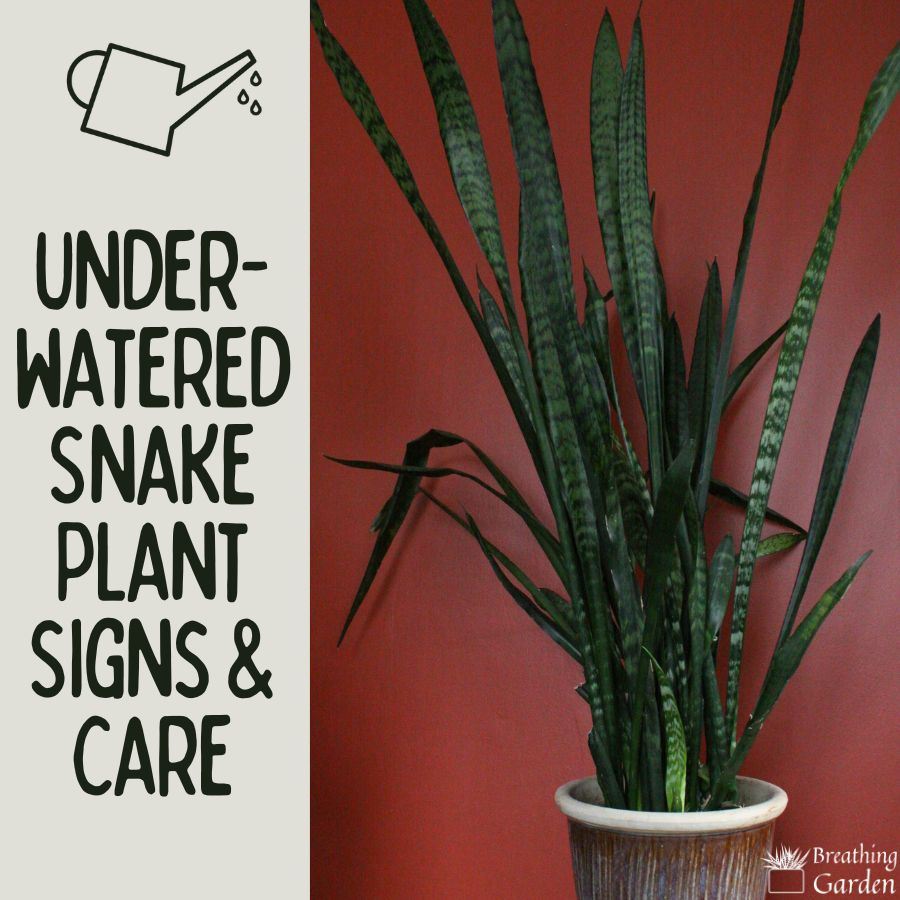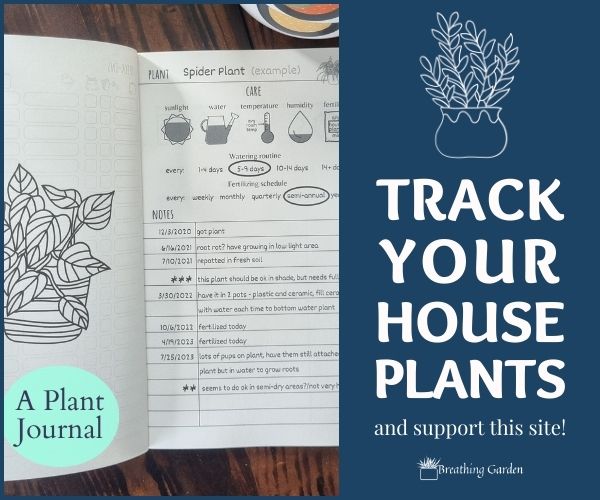Keeping track of when plants need to be watered can be kind of confusing sometimes. Especially if the plant doesn’t need to be watered on a weekly basis. That’s typically the case with snake plants! So it can be easy to accidentally have an underwatered snake plant.
*This post may include affiliate links. When you purchase items from these links, we will receive a small commission, at no extra cost to you, to help support this website. Thank you for your support! Read more ->
Snake plants can be one of the easiest plants to care for, since it doesn’t need much sunlight or maintenance, and only needs to be watered once in a while. So it can be easy to forget about your snake plant and not water it for a few weeks (or longer).
So what do you do to bring your snake plant back to life? Find out!
What Does an Underwatered Snake Plant Look Like?
Before we go further, here are a few things to look for to tell if you’ve got an underwatered snake plant. It can be difficult to tell sometimes, since overwatering and underwatering can have some of the same problems.
Other than just dry soil, you’ll notice changes in your plant. These can include the leaves turning brown, curling, or the leaves drooping/falling over. Some of these can also be problems caused by too much sun or a poor root system, so let’s look into how to tell that you’ve got an underwatered snake plant rather than other issues going on.
An underwatered snake plant may also be caused by not enough space in the pot, and you may want to separate some of the pups from the main plant!
How To Tell If The Snake Plant Needs Water
If you’re worried your snake plant needs water because you’re seeing signs discussed above (leaves browning, curling, or falling over), it’s important to check that the actual issue is lack of water. So how to tell if the snake plant needs water?
1. The easiest thing to do is to first check the soil. If it feels extremely dry, almost like sand, you’ve definitely got an underwatered snake plant.
2. The next thing to check for is that you don’t see any pests on the plant itself or buzzing around the soil.
3. Finally, check the light amount and temperatures your Sansevieria is being subjected to. If it’s too cold, some of these problems could also be occurring. You could also be subjecting your plant to too much direct light, which could be burning your snake plant. Too much light could also be causing your plant to dry up more quickly than you’re watering.
Keep reading: Snake Plant Temperature Tolerance & Do Snake Plants Like Humidity
How To Revive Snake Plants
Once you’ve determined that you have an underwatered snake plant, it’s time to revive your plant. And this can depend on how deeply your snake plant has been dehydrated. While they are a succulent, they do still need occasional watering.
So how do you revive your snake plant? With water! That’s the most important key, is to water your snake plant. If your snake plant isn’t too underwatered, just give it a thorough watering and be sure to check that the soil has actually gotten wet. If the soil is especially dry, it’ll mostly go straight through the soil.
If you’ve got a pot with drainage holes in the bottom, you can also bottom water your plant. Put your snake plant in a bowl with water, and let it sit in there to soak up water for 15-30 minutes. (Read if snake plants need drainage holes here)
Just make sure that your snake plant gets water and has the ability to absorb it, so place it in an indirect light area to keep it from drying out immediately.
You may or may not see changes in your snake plant right away.
- If the brown spots are completely dry, you can cut them off leaving just healthy parts of the plants.
- Curly leaves should eventually uncurl (unless you’ve got a variety that is meant to have curly leaves) – Read more about the Varieties of Snake Plants
- If you’re having issues with the snake plant falling over, you can use a stake/pole to prop it up until it gets sturdier again.
Make sure to continue checking your snake plant regularly, multiple times a week at first and water when the soil feels dry.
After that, it’s important to continue checking on your snake plant and watering when it feels dry.
Taking Care Of Your Snake Plant
In the long term, you won’t need to check your snake plant multiple times a week, but it is good to regularly check your snake plant to see if it needs to be watered.
Watering Reminders/Tips
If you’re really not comfortable with being in charge of watering your plants, there are a few handy tools to help take care of your snake plant. One is to find an app that reminds you to water your plants. There are many out there, so you’ll have to find the one that works best for you.
Another option is to get a terracotta self watering spike. Simply fill up a water bottle and put it on the terracotta spike, and as the soil dries out it will water itself.


There are other variations of these as well, including glass balls that you fill with water that water the soil as the soil dries out.


If you’re feeling very high tech, there are even soil moisture meters that you can either leave in the plant or move from plant to plant to know for certain if you need to water your plant.


In Summary
As a general rule of thumb, you can water your snake plant every 1-2 weeks (more in summer, less in winter). But this also depends on the size of the pot, type of pot (terracotta will dry out quicker), type of soil, and how much light it’s getting. If it’s in a small pot, in direct sunlight, or in a hot climate, it’ll need to be watered more frequently. If it’s in a large pot, in a cooler climate, or in indirect sunlight, it can be watered less often.
I check all of my plants every Monday to see if they need to be watered and then water whichever feel dry to the touch. If they don’t feel dry to the touch, I leave them until the following week, where I’ll check them again.
If you’ve got an underwatered snake plant, not all is lost. With a bit of care and maintenance, you should have a happy and healthy Sansevieria once more.



